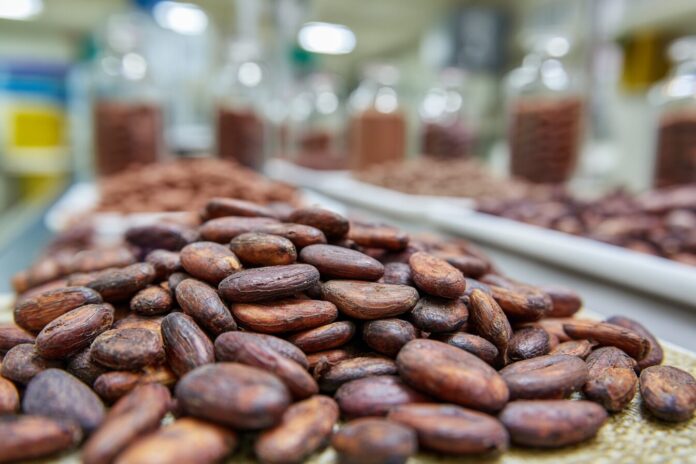A New Chapter Begins for Fine Chocolate Fermentation
Chocolate lovers around the world have always celebrated the rich tapestry of flavors inherent in fine cocoa. Traditionally, the art of fermenting cocoa beans has been left to unpredictable environmental microbes. However, because the natural process varies by region and season, the resulting flavor profile can be inconsistent and challenging for both farmers and chocolatiers. Most importantly, this variability has driven the need for more precise methods in achieving the coveted taste of premium chocolate. [5]
Today, sophisticated laboratory techniques are redefining fermentation by harnessing carefully controlled microbial communities. This refined approach not only brings consistency but also opens the door to innovative flavor exploration. Therefore, the marriage of technology and tradition is paving the way for a new era in chocolate production.
The Science Behind Chocolate Flavor: Microbes Take Center Stage
At the heart of this breakthrough is a deeper understanding of the microbes responsible for chocolate fermentation. Researchers have identified key variables including bean temperature, pH conditions, and the specific strains of bacteria and fungi that contribute to chocolate’s signature notes. Because these factors interplay in delicate balance, scientists now curate a laboratory microbial community that mimics the natural process with remarkable accuracy. Evidence from groundbreaking studies, such as those reported by Eurekalert and Bioengineer.org, has confirmed that replicating these conditions is not only possible but also highly effective.
Besides that, working in collaboration with cocoa farmers in Colombia has enabled researchers to map out the precise microbial interactions essential for flavor development. By combining traditional knowledge with advanced genetic sequencing and microbial analysis, this integrative approach has transformed our understanding of cocoa fermentation into a precise and predictable science.
From Unpredictable Artistry to Precision Fermentation
Because traditional fermentation lacks controlled conditions, producing high-quality chocolate consistently has been a considerable challenge. Therefore, the shift toward laboratory-guided fermentation represents a monumental leap for quality assurance in the chocolate industry. Scientific advancements now allow chocolate makers to set specific markers such as pH, temperature, and microbial composition, making flavor outcomes both repeatable and finely tuned. This newfound precision is supported by insights from recent breakthroughs that outline the ideal recipe for flavor perfection.
Most importantly, laboratory control not only standardizes production but also encourages innovative exploration. Researchers and producers are now able to experiment with various microbial consortia, creating novel flavors that were once considered impossible. As a result, the industry is witnessing a renaissance in creative chocolate making, where artistry blends perfectly with scientific precision.
Building Synthetic Microbial Consortia: How It Works
The process of constructing synthetic microbial communities is both intricate and fascinating. Researchers sequence hundreds of naturally-occurring microbes and then assemble these into mini-ecosystems composed of up to 30 strains. Because each microbe contributes specific biochemical reactions during fermentation, grouping them in optimal combinations is key to achieving consistent flavor profiles. Advanced studies, such as those highlighted by C&EN, have detailed how lab trials successfully recreate the sensory experience of finely fermented chocolate.
Besides that, this method provides unparalleled insights into the microscopic interactions that govern flavor development. Scientists are now better equipped to control the fermentation process, ensuring that each batch of chocolate achieves the desired balance of floral, fruity, and nutty accents. Transitioning from traditional, often unpredictable practices to controlled, talent-driven fermentation highlights the significant progress made in food science and technology.
Why Precision Matters: Benefits for Chocolate Makers and Farmers
Because consistency is paramount in gourmet chocolate production, the advantages of controlled fermentation are extensive. Firstly, laboratory-based processes provide consistent quality and repeatable flavor outcomes. This improvement not only enhances consumer confidence but also allows chocolate brands to maintain a premium reputation, as evidenced by studies and case reports from Bioengineer.org.
Most importantly, the precision fermentation method also benefits cocoa farmers by securing market access and sustainable income. With reliable flavor profiles and origin assurance, producers can negotiate fairer pricing and expand their reach in global markets. Moreover, defined microbial fermentation also unlocks new flavor horizons, much like how starter cultures revolutionized the production of cheeses and beers.
Challenges and the Road Ahead
Although controlled fermentation promises tremendous benefits, challenges remain. Because of the complexity of microbial interactions, creating a perfect recipe demands rigorous modeling and continuous refinement. Researchers are persistently expanding microbial libraries and leveraging next-generation sequencing technologies to further understand these complex networks. As a result, the journey to fully mastering cocoa fermentation is ongoing, with each study contributing vital insights into flavor formation. Research highlighted in journals and news outlets such as C&EN offers a promising glimpse into future innovations.
Besides that, the collaborative efforts between academia and industry pave the way for rapid advances. With every iteration of research, the controlled fermentation process becomes more refined, ensuring that the chocolate of tomorrow will not only meet but exceed our expectations in both taste and quality. Therefore, embracing these challenges now will lead to a more sustainable and flavorful future for chocolate production.
Conclusion: The Microbial Future of Chocolate
In conclusion, the transition from spontaneous to laboratory-controlled fermentation marks a pivotal moment in chocolate production. Because precision fermentation allows for outstanding consistency and innovation, it is setting new standards in the culinary world. Most importantly, as scientific insights continue to unfold, chocolate will not only be more predictable in flavor but also tailored to meet diverse consumer preferences and sustainability goals.
Therefore, the future of fine chocolate lies in the harmonious blend of scientific ingenuity and the time-honored tradition of cocoa fermentation. As researchers refine microbial consortia and explore new flavor territories, consumers can look forward to a world where every chocolate bar tells a story of innovation, quality, and passion.
Reference Links
- Eurekalert: New research ferments the perfect recipe for fine chocolate
- Bioengineer.org: Microbial Community Mimics Fine Chocolate Fermentation Traits
- Bioengineer.org: Breakthrough Study Unveils the Ideal Recipe for Perfecting Fine Chocolate Flavor
- C&EN: Scientists Probe the Microscopic Secrets Behind Fine-Flavor Chocolate
- University of Nottingham: New Research Ferments the Perfect Recipe for Fine Chocolate



